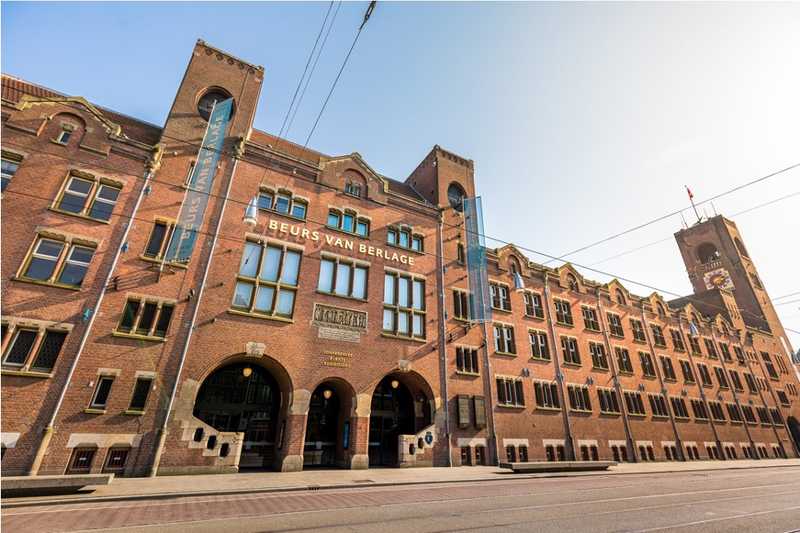
The annual Dutch event "Toekomst van het Betalingsverkeer" (Future of Payments) will be held for the 31st time on Wednesday March 31st. Ximedes is excited to sponsor the event at Amsterdam Conference Center 'Beurs van Berlage' and to meet the Dutch FinTech industry.
https://www.toekomstbetalingsverkeer.nl/

Keynote Embedded Payments
In our keynote at “Toekomst van het Betalingsverkeer” on Thursday March 31, 2022 at the Beurs van Berlage in Amsterdam, we will address the ins and outs of Embedded Payments. This topic is of great interest for banks and PSPs because they need to decide how to support these new payments. Ximedes, as a software company specializing in the development of Fintech services, can help to provide the new payment infrastructure required to meet this demand.
Like many buzzwords ‘embedded’ has a very subjective meaning. So let’s start looking for a few examples of ‘embedded payments’:
Amazon One-Click Payments
In 1997 Amazon launched their one-click-payments. This revolutionized the checkout process, as it removed the need to fill out your card details more than once. Simply adding products to your cart and pressing the one-click payment button sufficed. The one-click payment option was so effective that other companies soon followed suit. Apple, for example, introduced the feature to iTunes in 2000. Google later implemented it on the Android Market. Today, one-click payments are commonplace and expected by consumers.
Uber
When using a cab-service like the very well known Uber or Lyft there is no need to take out your wallet anymore. Also, you don’t have to be concerned if you forgot to bring your debit- or credit card. Using the service automatically is paying for the service.
Picnic
At the Dutch supermarket disruptor Picnic, you can order your groceries online and have all items delivered at your doorstep the next day. In the Picnic mobile app SDD-consent is conveniently stored for all future payments. This means that you will no longer have to provide your bank details each time you make a purchase. You can simply confirm the payment in the app and your groceries will be on their way!
EMV Travel
It may seem antiquated to pay with your EMV cards, but it isn't always the case! Nowadays there are several PTOs (Public Transport Organizations) that allow you to use your bankcard to open tourniquets at bus-, train- and subway stations.. All your travel movements and corresponding ‘purchases’ of one day are aggregated and billed in one go. If you have a membership subscription or discount agreement, you will be billed accordingly at the end of each day. This provides some interesting new features like the possibility to address individual accounts for loyalty or identification by simply tapping your EMV-Banking card.
Card-On-File / MDES
In-app payments are also a great way to speed up the checkout process, as you don’t have to enter your card details every time. In-app payments can be implemented with services like MDES. Your card details will be tokenized and only in combination with the merchant’s token can it be used in the EMV network to settle for payments. MDES is a more secure way than the Card-On-File method where the merchant has to store card details, which obviously has some security disadvantages. With these techniques your EMV card is already seamlessly integrated in the services of your online merchants.
What the examples above have in common is that there is no longer a separate payment moment after an initial order. Instead the moment of your order is automatically combined with the payment, hence the names seamless payments, one-click payments, invisible payments or integrated payments.
As mentioned before, ‘embedded’ is a buzzword and besides payments, there are all kinds of financial services that can be embedded in third party offerings. Financial institutions can benefit from this as long as they clearly outline and separate these services and make sure they can be easily integrated. These would then be good examples of the API-economy in action. Services that could be easily embedded are leasing, lending, exchanging and insuring. This would be a definite game-changer since these optimized single purpose services can also be offered through partner channels. Ordering a product online can be coupled with a third party’s commercial finance or leasing offer. This is an area in which our banks should operate.
Obviously this is rather difficult to implement. Due to legislation, legacy, and complicated portfolios, financial institutions require substantial levels of IT investment and involvement. For your first step, you will need an accurate, quick and smooth onboarding process. When offering financial services a profound knowledge of the end-client is required. Consider all the mandatory data, such as the correct UBO (Ultimate Beneficial Owner) registration, and everything else that is required for AML compliance. Of course, a merchant would want to know what a potential buyer’s payment behavior has been in the past. This onboarding flow should be very thorough and, ideally, conclude in a legally binding contract. Today, almost all financial institutions can provide these kinds of services to their clients, but only their own clients. A strong onboarding flow may open the door to a new and much larger channel: wholesale sales that bring in fresh business.
Hope to see you all at the ‘Beurs van Berlage’, on March 31.
Thimo Harmsen
Director Business Development
